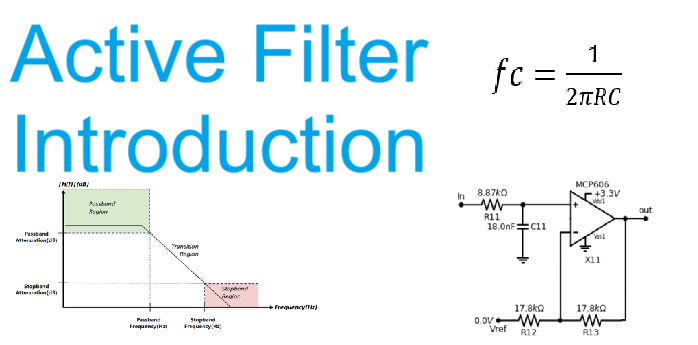This is an introduction to supplement the support articles on designing active filters ad provides a friendly introduction into the basics of active filters.
An active filter is an electronics circuit designed to filter particular frequencies that comprises of active components typically an operational amplifiers (op-amps) or other semiconductor devices, configured and designed with passive components that are resistors and capacitors, to filter electrical signals.
Active filters are designed to allow specific frequency signals to pass through while attenuating or blocking others, depending on the filter type

Active filters with instrumentation
Active filters are used everywhere within the instrumentation design sector particularly within pressure sensors, this is a popular circuit in sensor PCB designs and are frequently used to sample , filter and scale a particular sensor output.
Commonly used with pressure sensors active filters allow the output of the raw pressure sensor to be scaled and filtered accordingly.
For example the widely used instrumentation op amp configuration can also be turned into an active filter by adding capacitors and more consideration when selecting the resistors. This will improve the integrity of the pressure voltage signal

Cut off frequencies
The cut off frequency is the frequency at the -3dB point.
When the cut off frequency has been reached the amplitude of the signal will not suddenly stop , it will have a gradual degradation every unit of frequency above the cut off point.
The steepness of the amplitude attenuation depends on the type of filter
Formula for cut off frequency of a 1 poll filter

Why is the – 3dB point significant?
The -3db point is referred to the cut off frequency point because this is the point at which the signals power is reduced by half.

Why use an Active Filter?
Active filters have many advantages over a passive filter.
The active filter that will be referred to here are the circuits that use operational amplifiers.
Advantages of an active filter
- Possibility of amplifying or scaling the signal
- High input impedance of the Op Amp meaning the signal being filtered will be negligibly affected by the filter.
- Active filters can be connected together to improve the steepness of the signal attenuation after the frequency cut off
Normally a passive filter is used
- As a crude filter for protection against EMI e.g. low pass filter on reset lines
- A Very basic means of filtering interference signals out of signal
- Cheaper
Types of Filters
Depending on the frequency attenuation requirement will determine which type of Active filter is require here is a list of the types of filter
| Filter | Description |
| Low Pass | Attenuate amplitudes above the cut off frequency |
| High Pass | Attenuate amplitudes below the cut off frequency |
| All pass | Only changes the phase of the signal |
| Band stop filter | Attenuates signals either side of a particular frequency |
| Band pass filter | Attenuate signals in the middle of 2 frequencies |
Low Pass Filter (LPF)
Low pass filters attenuate or reduce voltage signals that are below a certain frequency.
Below is an example of a single poll active low pass filter

High Pass Filter (HPF)
High pass filters are designed to only pass frequencies above the cut off frequency and attenuate frequencies below this value.

All Pass Filter
Band Pass Filter (BPF)
Band pass filters implement a high pass and a low pass filter to only allow frequencies of a certain range to pass and attenuate frequencies that do not fall in that range.
They can also be made by using a resistor inductor capacitor circuit (RLC).

All pass filters do not filter or attenuate amplitude ,Instead they change the phase of the signal

Band-stop Filter (BSF)
The band stop filter also known as a notch filter will pass most frequencies unaltered but will attenuate frequencies in a specific range to a very low level.
Connecting a high pass and a low ass filter in parallel instead of series makes this.


